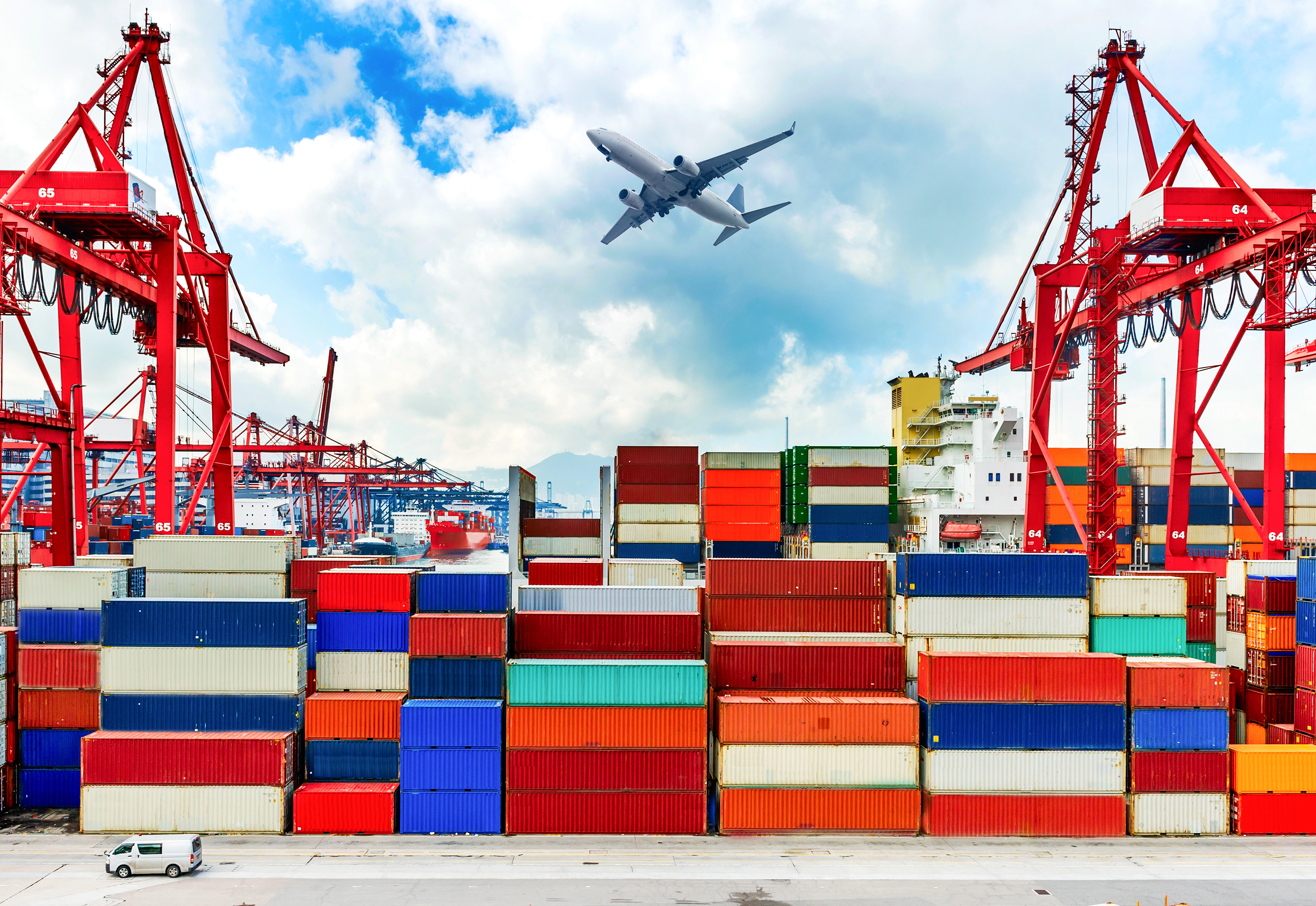Challenges and new solutions in logistics
Challenges and new solutions in logistics
In the recent years, a number of new, disruptive solutions have emerged in the field of logistics, which have challenged every participant on the market. What are these challenges and what strategies should you follow to solve them?
In 2016 Amazon introduced Prime Air services which allows to deliver goods in only 30 minutes from ordering by using drones. Uber’s self-driving truck Otto made its first trip in Colorado delivering 50,000 cans of beer. In the same year, Skuchain, a Silicon Valley startup has created a transportation supply chain using blockchain technology. It can be seen that 2016 had several disruptive solutions which could change the rules in logistics and made the market to adopt new technologies.
Based on PwC’s study, 50% of commercial transportation companies thinks that the lack of digital culture and training in the company would make any innovation attempt fail. 38% of them found that unresolved questions around data security and data privacy in connection with the use of external data is a vast challenge in designing digital operations. Transportation companies have many reasons to avoid digitalization but they can assumed to be negligible in comparison with keeping up with their innovative competitors and the fast-changing and rising client needs.
While innovation may seem like a necessary, inevitable, and involuntary step, it is doubtless a real and quick solution to the challenges of the logistics industry and thus can lead to a significant increase in profitability.

Challenges, or how we produce losses
Lack of employment and commitment
The lack of labor in Hungary with the emergence of new technologies affects not only the IT field. For freight forwarding companies it is a significant challenge to recruit a sufficient number of trained and qualified personnel, which, in addition, is 40% annually fluctuated according to recent surveys. High fluctuation can be attributed to the low motivation of employees, which can also have a big impact on our earnings. A committed workforce can increase the profitability of our business by about 22% and reduce the losses resulting from mistakes and quality deterioration by 41%.
Peculiarities of non-standard packages
With the emergence of various online merchant networks like Alibaba, Ebay and Amazon, the entire trade industry and its related areas - including shipment and storage - have changed radically. Customers and buyers have instant access to everything; they can order and buy any product at any distance and they have strict expecations for home delivery services. In January 2017, eBay had 167 million users, which shows the platform's popularity.
What's the problem with new sales platforms? As a result of eBay-like solutions, companies in logistics and supply chain industry face a large number of non-standard packages, which are not easy to process, arrive and track. Extraordinary processes are causing higher error rates, more time expenditure and thus higher costs.
Challenges of warehousing
Both in warehousing and in transportation, it has a great importance of how effectively can we utilize the available capacity. The rent of a warehouse will not be less if, as a result of inadequate placement of goods, we can only store as much as half of it. In the case of freight, we can not afford the same cost for a semi-loaded truck or for a car with a maximum load.Costs can be high if we do not optimally utilize the space, so it can be a simple cost-cutting and revenue-generating tool in itself if we strive for maximum utilization..
It can also cause serious problems if we do not have accurate and up-to-date information on our stock. The lack of information may result too large and too small inventory - neither of them is a cost-effective solution. The lack of a product can significantly slow down delivery services, while excessive volume will eventually lead to price reductions to encourage sales, so that would reduce our profit as well. Without having the right information and without the transparency of the company's business, we can lost serious profit while our costs are constantly increasing.
Goods picking and moving goods
Storing fast moving inventory in the back of a warehouse is not the most optimal solution. We can also make a number of mistakes during picking up and moving goods, with which the efficiency of the business will be significantly reduced and unnecessary extra costs will arise. According to researches, 5-7% of the company's sales revenue is incurred for shipping costs, including the cost of unnecessary goods movements.
Another important problem is the inadequate management of waiting times. For example, waiting for approval of shipping documentation or inefficiently organized picking jobs cause unnecessary extra costs and wasted time. In most warehouses, picking costs account for more than 55% of the total cost, so this area worths to pay attention of.
Solutions and possible strategies
Automation in logistics processes
The potential of digitalisation can be applied well in logistics: one of these flagships is automation which can significantly increase the efficiency of the workflow - many activities can be performed with less intervention and easy task traceability.
Task assignment and task management automation
Logistics processes have well-defined phases, milestones and responsibilities which are assigned to these. By automating task assignment, the tasks will certainly not be forgotten - and in the case of deficiencies, it is easy to trace which tasks for which reasons have not been resolved for the deadline. And if we recognize the causes, they can be eliminated, thus ensuring the optimal operation of the process.
Inventory management automation
Without running an automatic inventory management, the operation of a company with large inventory is almost impossible - as if the inventory is unknown, the workflow can not be carried out properly. In a huge, stocked warehouse, you can certainly not be able to measure what kind of merchandise is available by only looking at them. By solving the automatic stockpiling, inventory removal and maintenance of the available stock portfolio, we have the opportunity to develop new cost-cutting processes. For example, a system may notify you if a warehouse is defective and uses automatic task assignment to take care of purchasing, thus avoiding customer service failure. With automatic stockpiling, when the merchandise arrives it can be delivered immediately, significantly shortening the delivery process.
Automatic reports, notifications, alerts
Employees with decision-making and intervention rights are not expected to perceive each step of the entire logistics process 24 hours a day. However, by providing automatic reports, notifications and alerts, these people can always get the most relevant information in real-time so that they can intervene and take action to prevent any malfunction.
By doing so, we can simplify and accelerate individual workflows, and some of the manual work can be automated thus provide a solution to the increasingly labor shortage of the logistics industry and the heavy motivation of employees. With the new tasks and new technology solutions, the continuous development and training of the workforce is necessary, which is nowadays an effective motivation tool for the HR market.
Complete merchandise tracking
According to the data of the Hungarian Central Statistical Office, in 2016 there was about 59 billion tonne-kilometers of freight transport. The data clearly indicates that how long distance has a good to take. It is therefore essential that, at the same time, the participants connected to the goods should have an accurate picture of the actual status of the shipment, the position of the consignment, as during that time a lot can be done with the package. For manual systems, transport information is only transferred from one operator to another through slow processes, significant time shifts, and high error rates. By using different barcodes and other identifiers (like QR codes) we can access the information in real time. At the moment that a given item reaches a station on a delivery route, by scanning the code the system automatically captures the status and notify everyone concerned. By the development of technology, identification is no longer requires classical barcodes in every case. With a mobile device's built-in camera and with a reader application we can have almost the same functionality at any time of delivery.
Since traceability relies on specific information in barcodes, it does not provide a complete solution for non-standard packages. Many times, scanning results incomplete information for a particular item. However, by ensuring the remote updating of the database, the processing of non-standard goods can be simplified. By scanning a barcode, the database can be easily modified to the correct data. As a result, if a package with the same ID arrives again in the future, the arrival can be automatically made.
Supply chain management software solutions
By our logistic programs, we provide a stable system for our customers. Our easy-to-integrate, custom-tailored systems are delivered with the latest solutions, so it is possible to use various modules and solutions.
Comprehensive IT system for transparency
The supply chain management process requires the cooperation of several different participants, in which cooperation is the availability of information and the full transparency of the work is indispensable for all parties. The client, the logistics service provider, the suppliers, the destination, and the recipient itself may claim some information about the goods, which data exchange could be a significant time and cost expenditure. In the year 2016, nearly 200 million tonnes of goods were forwarded in Hungary, which is large enough to say that the amount of data related to deliveries can be invaluable. Furthermore, data need be transformed into information to provide useful reference to the relevant participant of the process.
In a process with several participants, everyone wants to get some sort of information from the same amount of data. It can be a great help, for example, if we are using a common, comprehensive IT system that is accessible to all participants in the workflow, where they only see relevant information to them. With the common system, the speed and efficiency of the transfer of information increases considerably, since there is no need for the intervention of the participants. Thus all information is available and can be presented on a variety of devices (laptops, mobile phones, tablets, etc.), with easy-to-understand visual solutions, using data-visualization methods.
Corporate habits, different regulatory requirements and the applied CRM systems result different business processes for every company, so it has a huge importance for a comprehensive IT system to be able to adapt flexibly to each of these aspects.
Big Data: The Potential of Data
In every step of the supply chain management workflow, a huge amount of data is generated, and by recording and organizing it, we can find relationships that can prove to be excellent decision support tools. From the collected data, we can easily predict the future and determine how we can be a more efficient and profitable business. With the right data, we can optimize traffic and delivery routes, identify risk-taking operations in the process, maximize the utilization of available assets, and build upon the customer's purchasing habits we can estimate the amount of optimal inventory level in different periods.
Summary
The solutions specifically integrated in logistics can therefore be multifaceted under Industry 4.0: automated operations based on sensory measurements; Tracking codes that can be inserted into the map in real time; Multi-role workflow management systems or Big Data-based predictive design are only a fraction of the available methods. Similar developments are essential for companies in supply chain management to keep up with the key players in the era. Innovation is therefore inescapable for a successful company, however, innovations related to Industry 4.0 are supported by different domestic and international tenders, so we can still get help in renewal.
Sources: PwC, Manhattan Associates, DMR, Hungarian Central Statistical Office



